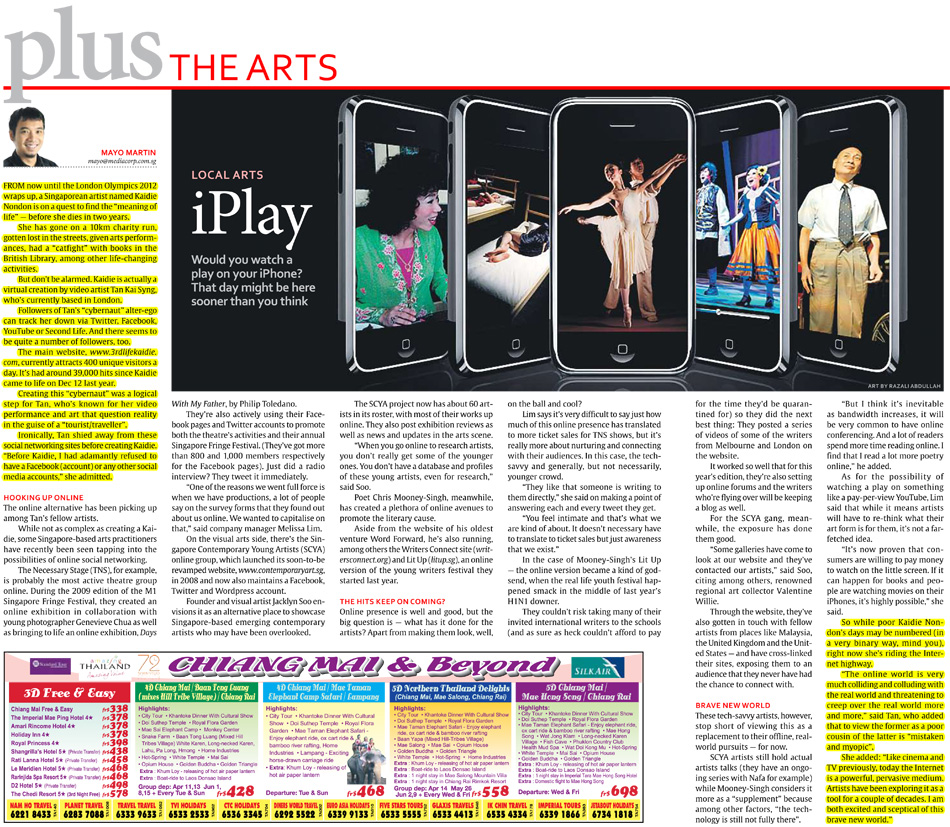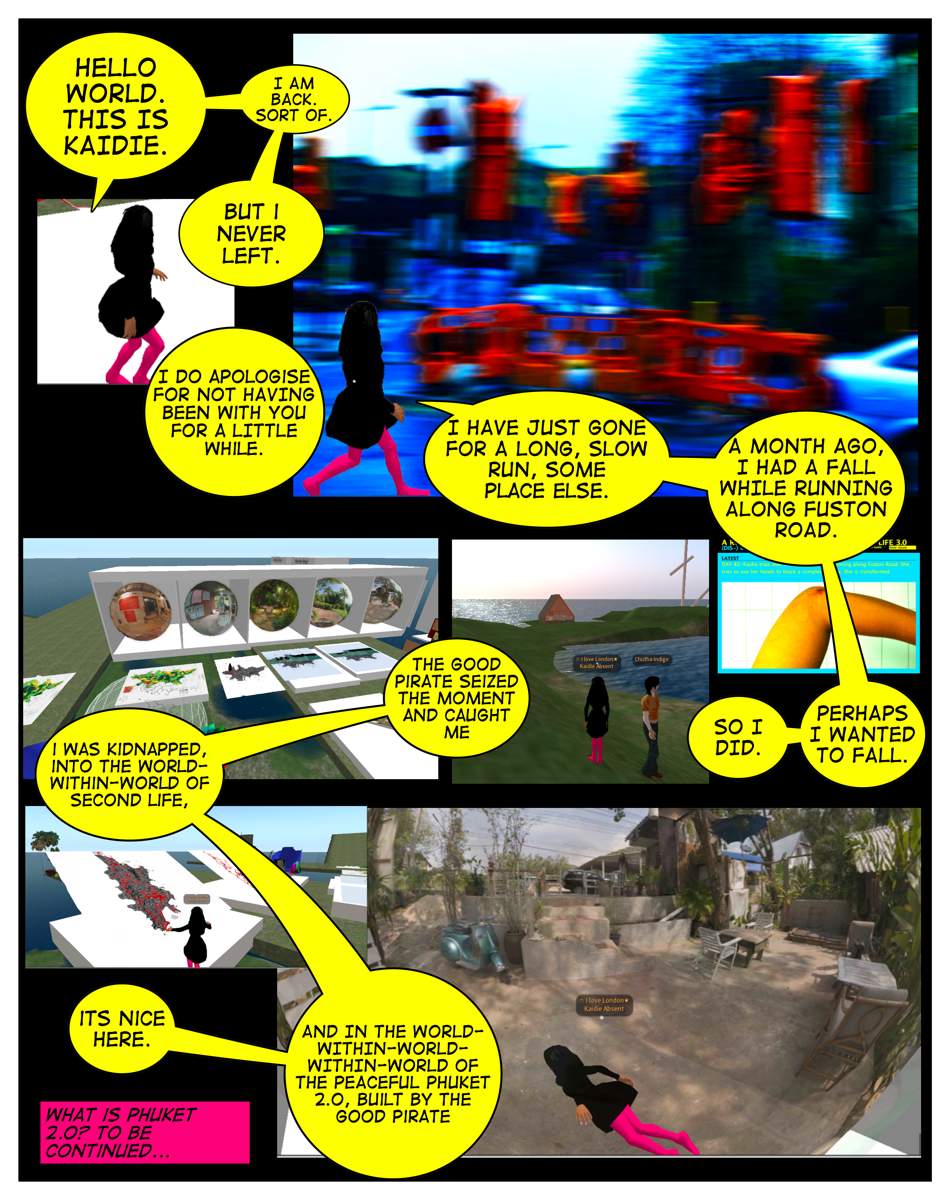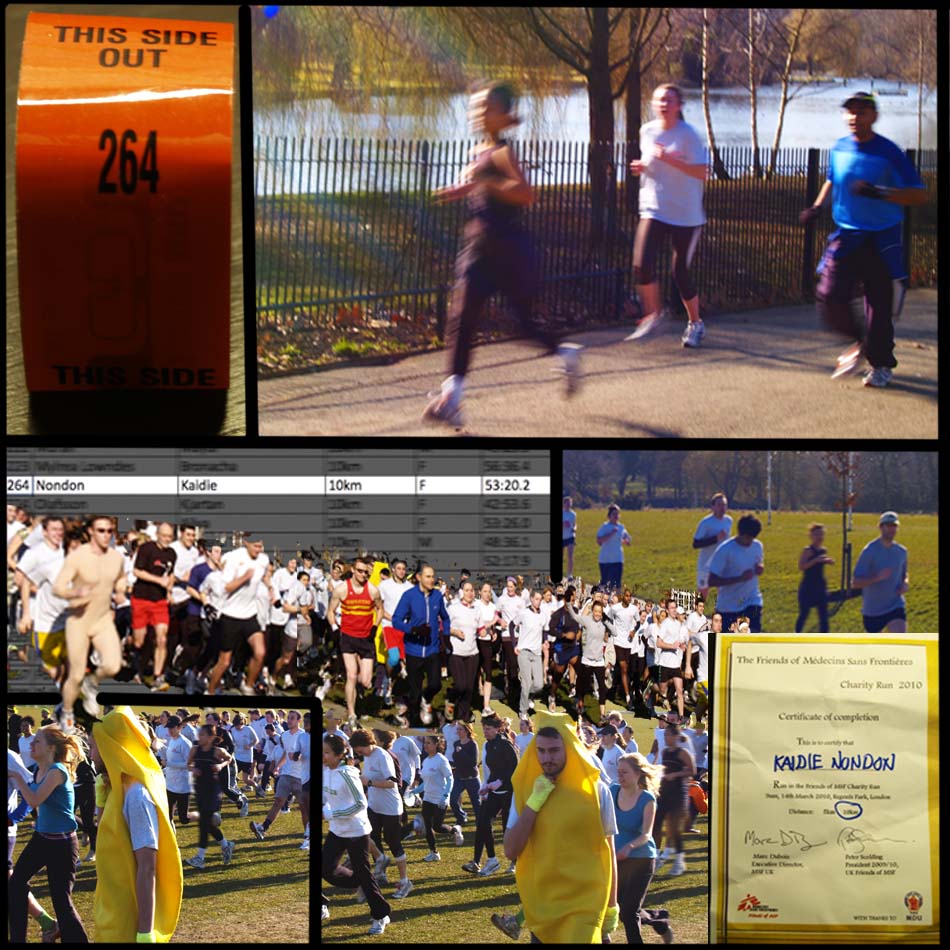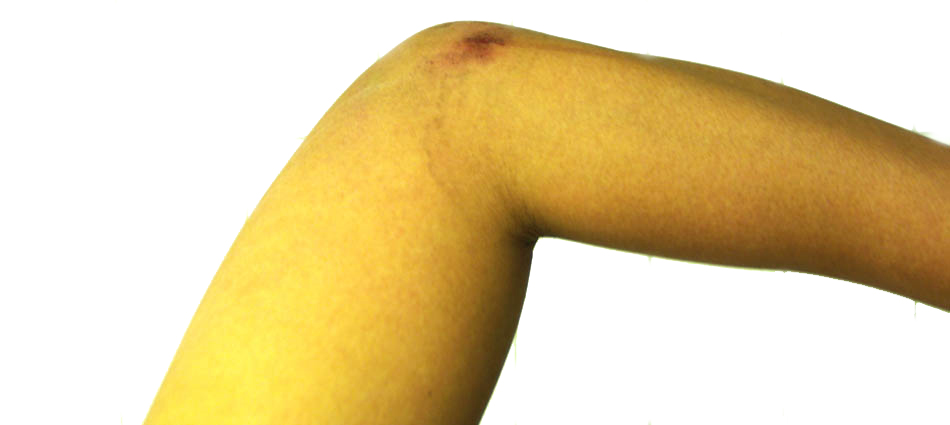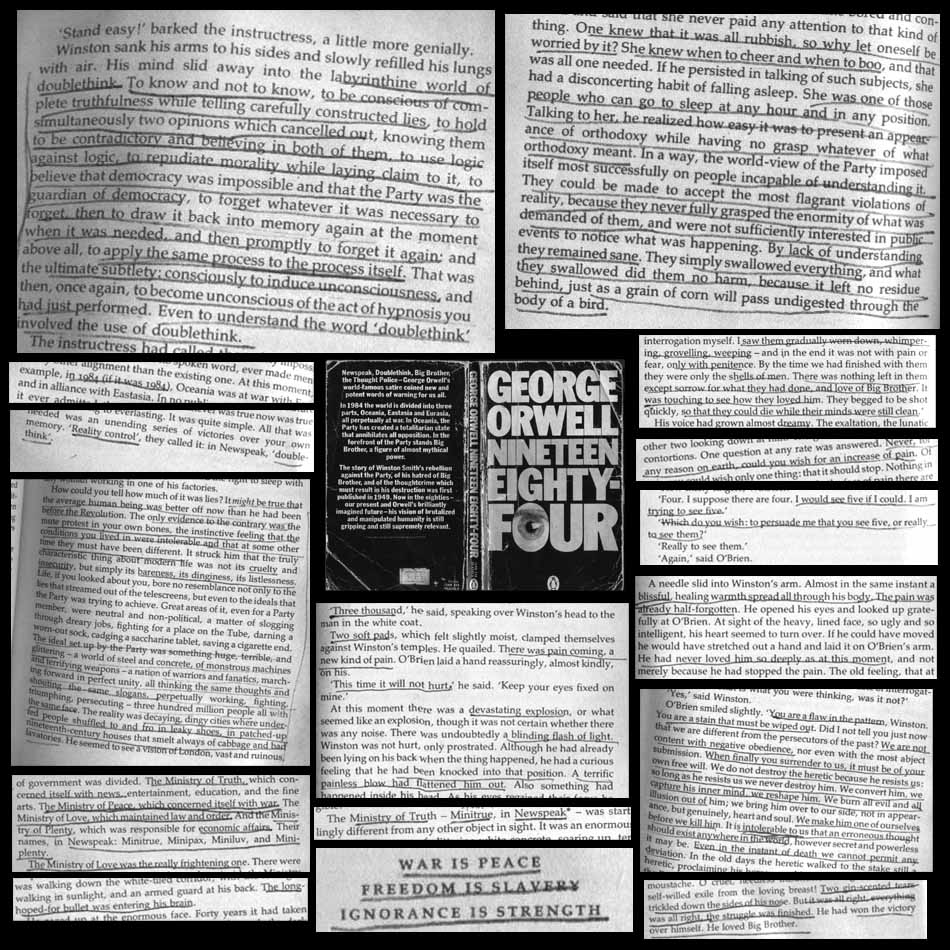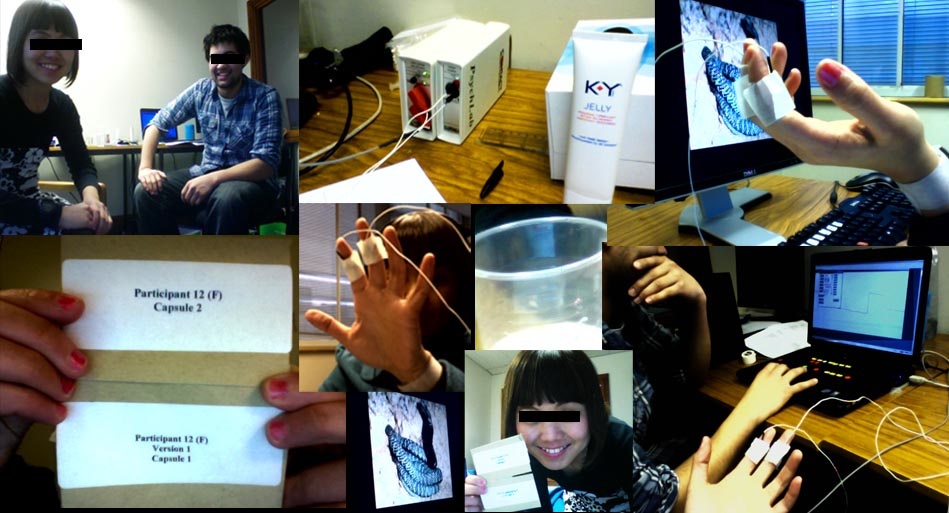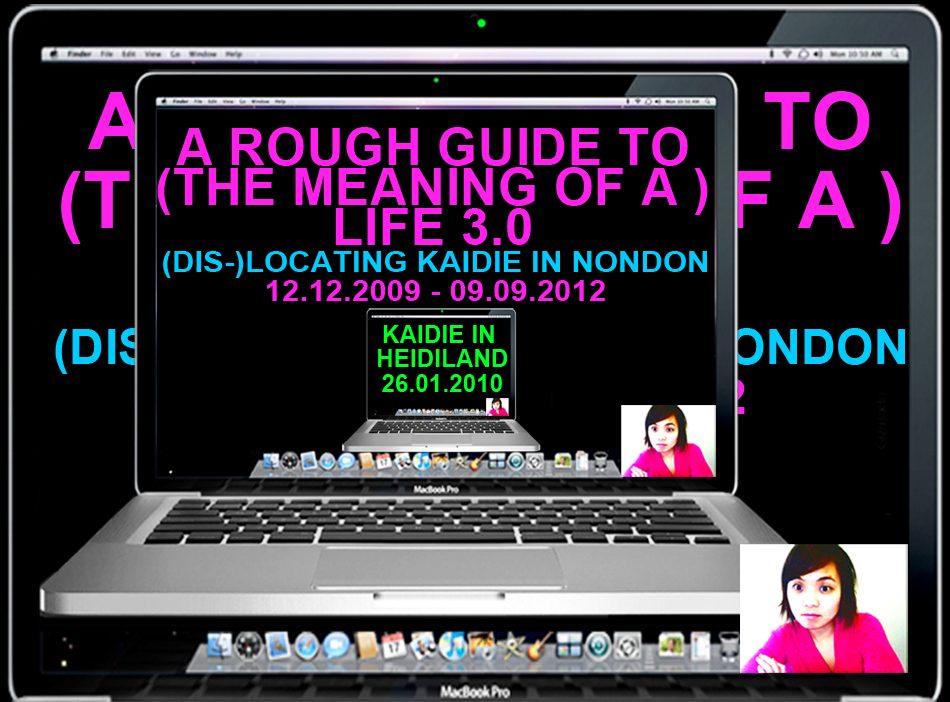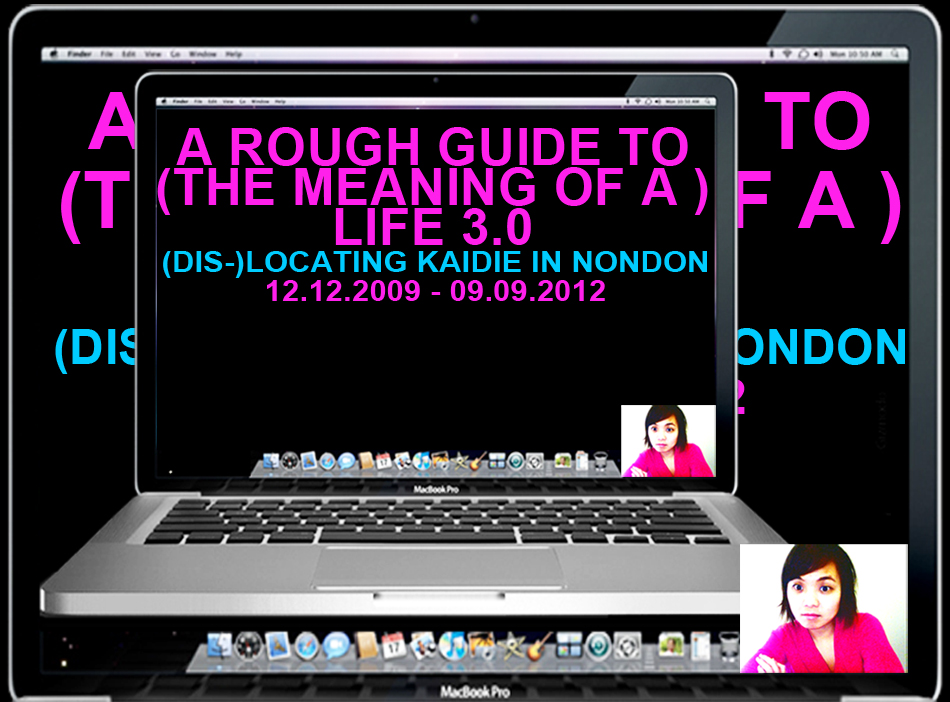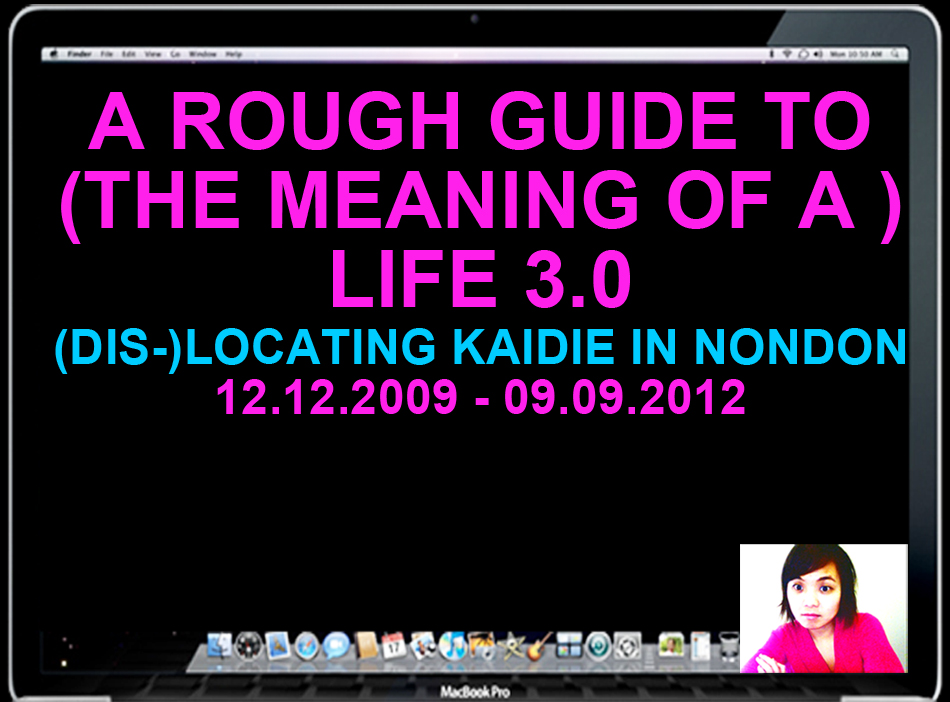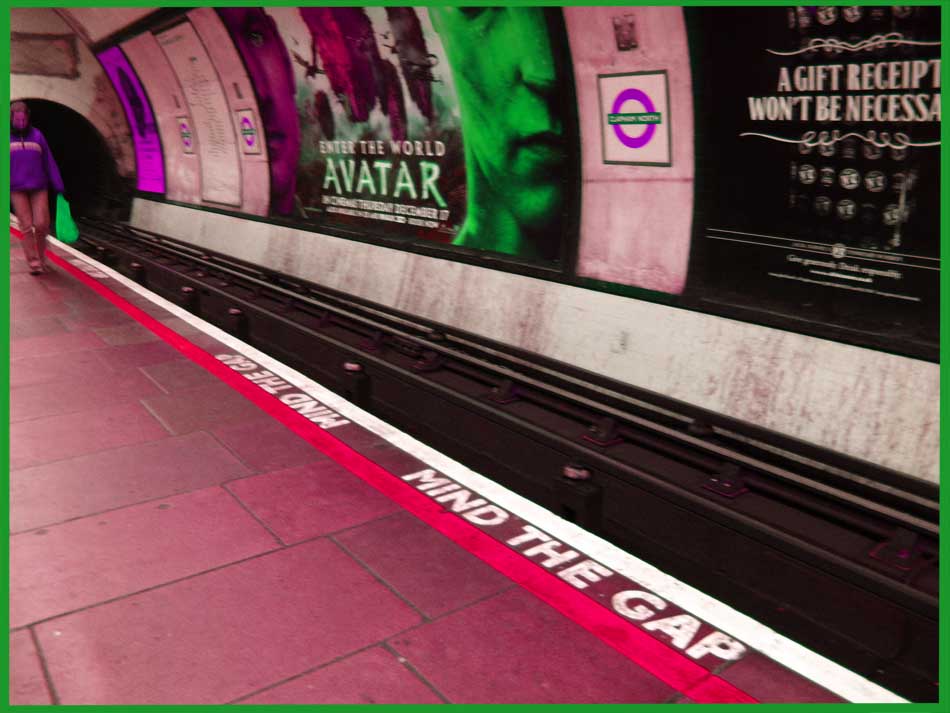WHERE IS THAT ‘SPACE’ IN CYBERSPACE? (HOW) DOES PHYSICS FUNCTION IN CYBERSPACE? Where did we come from? Where are we now? Where (the hell) are we off to?
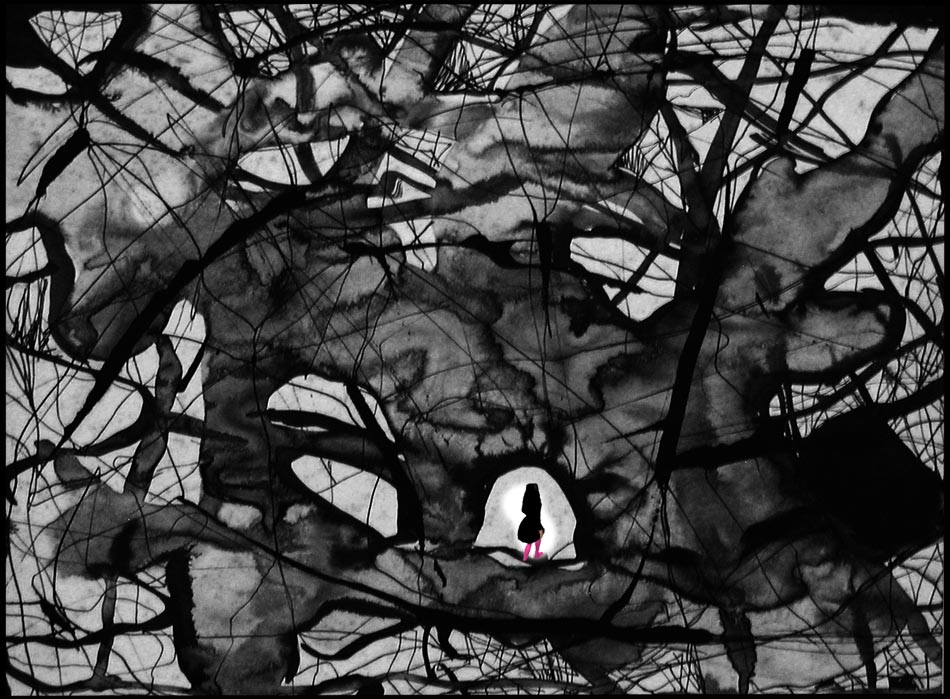
Should Kaidie use this map to plot her escape from her kidnapper in Second Life? After all it's been nearly 2 months since she's been there!
The following is one of several imaginary discussions between ‘Pro-First-Lifers’ (realists who value meatspace more than our virtual) and ‘Pro-Second-Lifers’ (cyber-enthusiasts and those who celebrate the power of imagination), in a fictitious online academic forum. Entitled (How) Does Physics Function In Cyberspace? Metaphysical Enquiries For The 21st Century: An Online Peer-To-Peer Peer-Reviewed Forum, subscribers include very serious philosophers, psychologists, media theorists, writers, cyber-geographers, cyber-artists, cyber-anthropologists and cyber-anybody-else. As in real life forums, participants are civilised – most of the time. Subscribers who identify themselves as a Pro-First-Lifer see Life 1.0 as the more important life, warn us of the dangers that lurk in Cyberspace, and view the Pro-Second Lifers as delusional dreamers who run away from problems they have in RL. Some of them also pelt names like ‘Stelarc Nutters’ and ‘Technogeeks’ at them. On the other hand, the pro-Second-Lifers retaliate by calling them names such as ‘Luddite’, ‘Academics who-are-pretend-Liberalists-but-are-actually-Fascists-in-real-life-Who-Diss-Everything-Because-It-Is-Uncool-Not-To’, ‘Conservatives’ and ‘Amish’. While many subscribers chose to hide behind generic avatars, some bravely use their real names (such as Sherry Turkle, Lev Manovich and Martin Heiddeger). That said, it is sometimes unclear which side they speak for. It is also suspected that some of the subscribers may have more than one account and speak from different sides. Such is the nature of any debates, especially online ones…
Let us begin our Cyberspace Odyssey.
Neal Stephenson: Like any place in Reality, the Street is subject to development. Developers can build their own small streets feeding off of the main one. They can build buildings, parks, signs, as well as things that do not exist in Reality, such as vast hovering overhead light shows and special neighbourhoods where the rules of three-dimensional spacetime are ignored.[1]
Pro-Second-Lifer A: This is an extraordinary time to be alive. Not only can I travel to different cities in real life (RL), there are even more travels I can have outside of RL. Thanks to the Internet, my world has expanded vastly. Cyberspace is a not only a great place to visit – within there, there are so many more places to enter. In Stephenson’s imagination, a metaverse is a ‘place’, with ‘streets’. In Gibson’s, it is a big neon ‘city’, within which there are many centres to visit. But the land size of Second Life alone, at 1,700 virtual square km, is larger than metropolitan London.[2] So it would not be a stretch, even, to describe Cyberspace as a world, within which there are yet many worlds to explore.
William Gibson: People jacked in so they could hustle. Put the trodes on and they were out there, all the data in the world stacked up like one big neon city, so you could cruise around and have a kind of grip of it, visually anyway, because if you didn’t, it was too complicated, trying to find your way to a particular piece of data you needed.[3]
Neal Stephenson: Hiro is approaching the Street. It is the Broadway, the Champs Elysees of the Metaverse. It is the brilliantly lit boulevard that can be seen, miniaturized and backward, reflected in the lenses of his goggles. It does not really exist. But right now, millions of people are walking up and down it.[4]
Pro-Second-Lifer B: Even when simply cruising around as Gibson does, surfing in cyberspace can be akin to psychogeographical tactic that the Situationists advocated in the streets. In these trips, surprises happen, bringing me to unexpected places. When I open my customised homepage on my Firefox browser, I may see a CNN news headlines that I click into to read; there, I may see comments written in by a viewer. Intrigued by her words, I check out her linked Blogspot blog. There, a Google ad pops up to tell me to check out a related topic, which I do, and at the same time, watch a Youtube posting by the same writer, at the same time! I write in a comment to her video, and seconds before I know it, someone else has already responded to my comment. So, another thing that makes my around-the-(Cyber)world-trip better than a RL one, is its simultaneity and real-time quality. It is as if I am visiting London, New York, Shanghai and Johannesburg at the same time! Better still, this world seems to be infinite, with no limits, capable of unending expansion. Like Columbus discovering virgin territories in the 15th century, Web 2.0 is our golden age of exploration, of Cyberspace. As not only a user but a content-creator myself with the easy-to-use tools, not only can I participate in the various virtual worlds, I can construct my own new territories.
Pro First-Lifer A: I might not have the guts to say this to you face–to-face, but I think you are being naïve, crass and Romantic. You are speaking of Cyberspace as if you are Alice entering Wonderland the first time, still in the state of enchantment. In the past two decades, the academic world has been up to speed with this – if not entire new departments like Informatics, there are new divisions in every discipline, such as digital anthropology or ethnography in the ‘old’ discipline of Anthropology, ‘new’ media art in Fine Art (which is by now rather old, so old that artists have dropped the ‘new’ out of embarrassment). This may disappoint you, but there is even the new discipline of Cybergeography – where geographers attempt to fully map the space that you describe as ‘infinite’. The same way psychoanalysts in Life 1.0 rationalise your dreams in your Life 2.0, Cybergeographers conduct their field work online, in-world, and share their data with us in Life 1.0. I am very sorry, but it is time to wake up from your (wet) dreams and have a reality check.
Martin Dodge and Rob Kitchin: The hype around much of Internet, especially in the mid 1990s, was that it was ‘everywhere and nowhere’ and it would make geography less significant in human organisation through the ‘death of distance’. This is patently not been the case. While the Internet has undoubtedly had an affect on the geography of business operation and individual consumption, distance is not dead. What is being witnessed is a complicated restructuring, through processes of concentration and decentralisation, across scales.[5]
Pro-Second-Lifer B: I do not disagree with Dr Dodge and Dr Kitchin. As we invent and use it, we also struggle to make sense of the complex medium. Just as we can approach life itself from different perspectives such as biology, religion and the arts, so, too, could Cyberspace be analysed from various ways. In fact, the penetration of the Internet on our lives is so far and deep, that it is as complex as life itself. And as Pro-First-Lifer 1 pointed out, pre-internet phenomena, disciplines and objects create neologisms, insert hyphens to join the new wave (e-commerce, iphone, Government 2.0); all offices, schools, libraries and institutions in First Life have an equal or even bigger Second Lives online (BBC’s iPlayer, tiny country Maldives as the first country to open its official embassy in Second Life in 2007[6]). Many brick-and-mortar businesses have also found it more efficient to have only virtual offices. So this is a complex stage of re-structuring and paradigm shifts indeed, as First Life attempts to be up to speed with the Second in Cyberspace, in order to fully make use of the powerful medium of the Internet.
Pro-First Lifer A: Check out my government’s website- on the page entitled ‘Social Media and Web 2.0 in Government’, the White House even has a tagline of ‘Better websites, better government’[7]! Recall too how part of Obama’s success during the election was because of his team’s ability to exploit the medium, being pervasive on Youtube and Twitter. So this is a case in point of an clever integration of our First and Second Lives.
Pro-Second –Lifer A: I’m confused though – should it not be the other way around? Better government, therefore better websites? … Anyways, let’s not digress from the discussion of the geography of Cyberspace that Dr Dodge and Dr Kitchin are trying to explain. In any case, no offence to Pro-First Lifer 1, but we certainly don’t need more of this country’s presence in our Second Lives, or of this country’s ‘exploitation’ of anything, for that matter, which we have in our First Lives. Way more than enough. Do not get me started.
Martin Dodge and Rob Kitchin: The idea of the Internet as being somehow ‘anti-geographical’ is based on three key notions: fantasy, denial, and ignorance: 1. Internet geography was assumed not to exist. This is anti-corporeal, cyber-utopianist fantasy that somehow the virtual communities of cyberspace can be produced in a realm divorced from material existence. 2. Internet geography was assumed not to be important, so could be denied. The failure of many e-commerce ventures in the dotcom boom, we would argue, was based in part on ignoring the grounded, geographic, realities of computer-mediated communication, logistic networks and labour markets. 3. Internet geography was assumed not be measurable. Because it was hard to do, it was ignored, especially in the heady days of bubble growth. The medium of communication might be virtual, but the Internet is dependent on physical infrastructure and human labour, most of which is invisible to users. The computers are small in scale and are usually hidden from view in anonymous servers rooms and secure, windowless buildings, while the cables are under floors, in ceilings and in conduits buried under roads. The banal technicalities of Internet infrastructures are easily overlooked (just like for other essential utilities of water, electricity) but they are not naturally given. The geographical structure and operation of networks that service modern living have politics.[8]
Pro-Second Lifer B: Dr Dodge, could you give an example please about the political nature of geography?
Martin Dodge: Domain names are important locational tools at a technical level, but also have a wider political geography in terms of how they are allocated and how this naming relates back to real-world territorial and jurisdictional boundaries. (For example, the recent ruling from a French court that the Yahoo Internet service must block users in France from buying Nazi memorabilia through the web.[9]
Pro-First-Lifer A: Just as there is geopolitics in the real world, there is cybergeopolitics as well. Let us discuss this in a later thread. Pro-Second Lifer 1, your Cyberbubble may burst if you come to my country and see Second Life’s 700 Debian Linux servers in a San Francisco data warehouse[10] – large, physical metals with lots of cables, all working furiously to generate your fantasy world. Just because you do not see them, you are blind also to their presence. And, by the way, if you do not already know, but this is a democratic society, so I have the right to free speech. Or, do you come from a repressed country with dismal human rights records? Have they blocked your Google search engine from the words ‘democracy’ and ‘freedom’ like the Chinese, or even ‘Life’ itself? Or, are you an oppressed Chinese yourself? I am a little busy saving the (real) world, but shall I liberate you as well?
John Perry Barlow: Whether by one telephonic tendril or millions, they are all connected to one another. Collectively, they form what their inhabitants call the Net. It extends across that immense region of electron states, microwaves, magnetic fields, light pulses and thought which sci-fi writer William Gibson named Cyberspace.[11]
Pro-Second Lifer A: The knowledge of the existence of hardworking machines running my Second Life in no way disrupts my enjoyment in-world. Incidentally, artist group Tsunami precisely attempted to question the meaning of distance in their presentation at Documenta 11, by walking from Kassel to Kiev, where Documenta’s servers are located.[12] Understanding that the workings of the dream machine of Hollywood studios, and for that matter, the behind-the-scenes of a blockbuster movie, can enhance my pleasure of the fictional world that is created. And even more so, arguably, in virtual worlds such as Second Life, since I am responsible for creating it! Like Pygmalion, can’t I help but marvel at my own creation! To return us to the topic of geography, I think it is a good idea to have a map around Cyberspace. GPS navigators, maps, Googlemaps and Google Earth certainly help and do not diminish the adventurer’s pleasure in her explorations. Magellan, with his crappy, low-tech compass (high tech at that time, to be sure), was the first to travel around the world, and went all the way to the Philippines (and got killed there, however, god bless his soul). In Cyberspace, search engines are already performing the function of helping one get oriented. Pro-First-Lifer A, answering you question, yes I am Chinese, but not that kind. What kind I am is none of your business. I think the Moderator of this forum should ‘liberate’ you and let you go. Like your country, you are uncivil. I must say that I find you repulsive.
John Perry Barlow: Cyberspace, in its present condition, has a lot in common with the 19th Century West. It is vast, unmapped, culturally and legally ambiguous, verbally terse (unless you happen to be a court stenographer), hard to get around in, and up for grabs. Large institutions already claim to own the place, but most of the actual natives are solitary and independent, sometimes to the point of sociopathy. It is, of course, a perfect breeding ground for both outlaws and new ideas about liberty.[13]
Bruce Sterling: Cyberspace is the ‘place’ where a telephone conversation appears to occur. Not inside your actual phone, the plastic device on your desk. Not inside the other person’s phone, in some other city. The place between the phones. […] [I]n the past twenty years, this electrical ‘space,’ which was once thin and dark and one-dimensional—little more than a narrow speaking-tube, stretching from phone to phone—has flung itself open like a gigantic jack-in the- box. Light has flooded upon it, the eerie light of the glowing computer screen. This dark electric netherworld has become a vast flowering electronic landscape. Since the 1960s, the world of the telephone has cross-bred itself with computers and television, and though there is still no substance to cyberspace, nothing you can handle, it has a strange kind of physicality now. It makes good sense today to talk of cyberspace as a place all its own[14].
Martin Dodge: [Cyberspace] suggests that we can exist in a digital ether. But these dreams are nowhere near reality, for cyberspace is hardly immaterial in that it is very much an embodied space. […] [I]t should be treated as an extension of the geographic realm, not as some disembodied, parallel universe. Nevertheless, cyberspace is changing geography, it is warping space, shrinking distance, and modifying our sense of place. Understanding these complex warpings and distortions is very much at the heart of cybergeography.[15]
Pro-Second Lifer B: Cyberspace, conceptualised in science-fiction of Life 2.0, is now brought back to the material world of Life 1.0 by Cybergeographers. While the realists or academics measure Life 2.0 with the rules of Life 1.0, Residents of Life 2.0 continue to attempt to push their limits of imagination and go deeper, further. While Dr Dodge maps Cyberspace as an ‘extension of the geographic realm’, Pro-Second Lifers like myself and Turkle’s MMOG player Doug would have mapped physical geography as an extension of Cyberspace, the same way he sees RL as another window in his desktop. In a similar vein, we can see our online existence as an extension of our physical existence, since many of us have email ‘addresses’ and ‘home’ pages, apart from an address and home in a physical location.
John Perry Barlow: Cyberspace is the homeland of the Information Age – the place where the citizens of the future are destined to dwell.[16]
Neal Stephenson: HIRO PROTAGONIST: Last of the freelance hackers/ Greatest sword fighter in the world/ Stringer, Central Intelligence Corporation / Specializing in software-related intel (music, movies & microcode). On the back is gibberish explaining how he may be reached: a telephone number. A universal voice phone locator code. A P.O. box. His address on half a dozen electronic communications nets. And an address in the Metaverse.[17]
Pro-Second-Lifer B: Like Stephenson’s Hiro Protagonist, our namecards can provide an address in the Metaverse rather than the physical – which in any case is becoming increasingly insignificant, given the death of the culture of letter-writing in preference of email (or briefer still, 140 characters). If we look at the larger picture, Cyberspace – not Earth – is our destined homeland, as Barlow tells us. Also, given that content is user-generated and emergent – by that I mean that which arises and exists only as a phenomenon of independent parts working together, and that which is not predictable on the basis of their properties[18] – there really seems to be more places that we can build, faster than the Cybergeographers are able to map them. The tension between Life 1.0 and Life 2.0 imaginations of the geography of Cyberspace is extremely interesting, just as the tension between Life 1.0 and Life 2.0 imaginations of of any aspect of life (identity, politics, behaviour, reality) and indeed, Life itself, extremely rich.
Pro-First-Lifer B: Pro-Second-Lifer B, you speak of the changes in Cyberspace as if human and natural geographies are static! In response to the changes in physical geography, new maps – and more importantly, new methods of thinking about mapping- are constantly generated. And, in this age, no one is so naïve as to assume that maps are transparent, neutral or objective, but are dynamic mappings.[19] Ditto Cyberspace! I also strongly advise you to have a look at Dr Dodge and Dr Kitchin’s wonderful book, Atlas of Cyberspace, which contains many mappings of many facets of Cyberspace, including maps of the structure of cyberspace, maps of the Web, maps of emails and virtual worlds, as well as an entire section of imaginations from the arts, including science fiction[20]. The existence of this book itself is proof enough of the Cybergeographers recognition of the diversity and wealth of Cyberspace.
Rob Kitchin and Martin Dodge: Maps are never fully formed and their work is never complete. Maps are transitory and fleeting, being contingent, relational and context-dependent; they are always mappings; spatial practices enacted to solve relational problems (eg, how best to create a spatial representation, how to understand a spatial distribution, how to get between A and B, and so on). [21]
Pro-Second-Lifer B: Thank you for the lead, I will definitely read that. I think we recognise that our quarrel about the gap between what we imagine (Life 2.0) and what we translate into reality (Life 1.0), belongs, in part, to the old debate of Cartesian anxiety. As a Pro-Second-Lifer, I certainly am in the ‘mind’ camp. Speaking of which, children certainly have very interesting imaginations of geography on- and off-line. Sherry Turkle talks about how children think of their creations in MMOGs coming to live, and travelling outside of their metaverse into cyberspace![22]
Sherry Turkle: Robbie, a 10-year-old who has been given a modem for her birthday, puts the emphasis not on communication but on mobility in considering whether the creatures she has evolved on SimLife are alive. […] if your modem were on, [the creatures] could get out of your computer and go to America Online. […] Sean, 13, who has never used a modem, comes up with a variant on Robbie’s ideas about travel. “The creatures could be more alive if they could get into DOS. If they were in DOS, they would be like a computer virus and they could get onto all of your disks, and if you loaned your disks to friends, it would be like they were travelling.”[23]
Pro-Second-Lifer A: And don’t we forget that it was, again, Google Earth – the powerful tool of military precision that raises concerns of privacy for the Pro-First-Lifers – is founded in science fiction as much as Jeremy Bentham’s panopticon. We don’t need to fly up the skies or outside of earth itself, to now have a bird’s or god’s eye view. Don’t we see the importance of Life 2.0, with its rich imaginations, supplying Life 1.0 with Life itself!
Neal Stephenson: There is something new: A globe about the size of a grapefruit, a perfectly detailed rendition of Planet Earth, hanging in space at arm’s length in front of his eyes. Hiro has heard about this but never seen it. It is a piece of CIC software called, simply, Earth. It is the user interface that CIC uses to keep track of every bit of spatial information that it owns — all the maps, weather data, architectural plans, and satellite surveillance stuff. [24]
Pro-Second-Lifer A: The MMOG Second Life begins as a vast landscape of untamed wilderness, that the Resident has to sculpt, shape, and settle. Just as RL, SL has different landscapes and sceneries for every taste and ambition – if one has enough Linden dollars, that is.
Wagner James Au: From open oceans spring sailboats, submarines, and cruise ships; from the plains come racing tracks, clothing–optional nightclubs, and Resident–made games of all size and style. From the mountains appears sprawling, Frank Lloyd Wright–style homes, tree villages, and heavily–armed World War II fortresses. In all this, there’s a distinct sense of an expanding wilderness being settled. [25]
Pro-First-Lifer A: You have a great sense of irony – the irony however is that you do not know it. You claim that ‘Life 2.0 supplying Life 1.0 with Life itself’ – do you not see that in your own formulation, Life 1.0 is the larger entity, with Life 2.0 a little grapefruit within it? And, my dear Pro-Second Lifer A, the ‘A’ in my avatar refers to my Almighty country, but I suppose yours refers to A***hole.
Moderator: Discussion thread closed due to Antagonistic behaviours of some users.
(This was sketched January 2010. Obviously, some things, including Kaidie’s grasp of things and her own position, have moved on. We are just uncertain if the ‘moving on’ is a progression, regression, or an other loopy trip).
[1] Neal Stephenson, Snow Crash (Spectra, 2000), pp. 24-25. (Chapter 4)
[2] Freund, Katie, ‘DIGC101 Online Worlds’, 2009 [accessed 2 January 2010].
[3] William Gibson, Mona Lisa Overdrive, (Spectra, 1989), p. 22.
[4] Stephenson, p. 24 (Chapter 1), Snow crash.
[5] Martin Dodge and Rob Kitchin, ‘Net: Geography Fieldwork: Frequently Asked Questions’, CASA: Working Paper Series, 83 (2004).
[6] ‘Tiny island nation opens the first real embassy in virtual world – Times Online’, Times Online, 2007 [accessed 22 December 2009].
[7] USA government, ‘Better websites. Better government: Social Media and Web 2.0 in Government’, WebContent.gov:, 2009 [accessed 4 January 2010].
[8] Dodge and Kitchin.
[9] Martin Dodge, ‘Cybergeography’, Environment and Planning B: Planning and Design 28(1) 1-2, 2001 [accessed 4 January 2010].
[10] Tim Guest, Second Lives (Arrow Books Ltd, 2008), p. 7.
[11] John Perry Barlow, Crime and Puzzlement, 1990. Quoted in Dodge, The Geography of Cyberspace Directory – What is Cyberspace ? [accessed 26 December 2009].
[12] Tilman Baumgartel, ‘[Reader-list] A different take on Documenta 11’ [accessed 4 January 2010].
[13] John Perry Barlow, Crime and Puzzlement, 1990. Quoted in Dodge, The Geography of Cyberspace Directory – What is Cyberspace? [accessed 26 December 2009].
[14] Bruce Sterling, Introduction to The Hacker Crackdown.
[15] Dodge 2001, ‘Cybergeography’, Environment and Planning B: Planning and Design 28(1) 1 – 2 .
[16] 1991, quoted in Dodge.
[17] Stephenson, Snow Crash.
[18] Apple Macintosh Dictionary function, version 2.0.3 (51.5).
[19] Rob Kitchin and Martin Dodge, ‘Rethinking maps’, Progress in Human Geography, 31 (2007), 331-344 [accessed 5 January 2010].
[20] Dodge and Kitchin.
[21] Rob Kitchin and Martin Dodge, ‘Rethinking maps’, Progress in Human Geography, 31 (2007), 331-344 [accessed 5 January 2010].
[22] Turkle, 4.01: Who Am We?
[23] Turkle, 4.01: Who Am We?
[24] Stephenson, Snow Crash. Chapter 13.
A month ago, during Kaidie’s dislocation, she was momentarily located in a Singapore newspaper in Life 1.0 (printed edition) and Life 2.0 (online version), and Life 3.0 (somewhere in between).
The above is reproduced and cropped from Today Online 23 March 2010, Mediacorp, Singapore.
** ERRATUM: Kaidie is not an artist. She is a (re-)searcher for the Meaning of Life 3.0. Now THAT’A a FULLTIME AND NOBLE (pre-)occupation!**
KAIDIE’S HITS/MISSES: IF WE CAN’T/DON’T WANT TO MEET IN THIS LIFE, PERHAPS WE COULD IN OUR NEXT/OTHER LIVES. ASSUMING THAT YOU’D LIKE TO, THAT IS. Same place, same time?
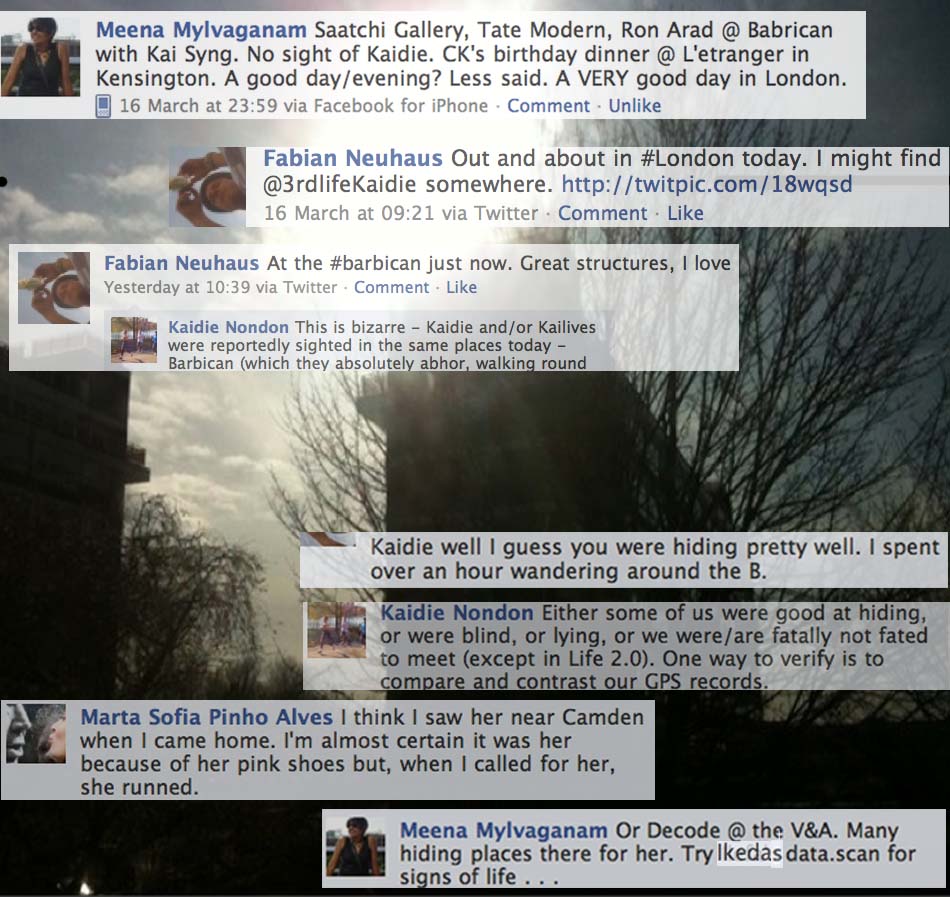 Reprinted from Facebook posts by Meena Mylvaganam, Marta Sofia Pinho Alves and Urbantick/Fabian Neuhaus. Image by Urbantick/Fabian Neuhaus.
Reprinted from Facebook posts by Meena Mylvaganam, Marta Sofia Pinho Alves and Urbantick/Fabian Neuhaus. Image by Urbantick/Fabian Neuhaus.
THANK YOU for attending Kaidie’s gig last Monday. She has resurfaced – right behind my back, as KAIDIE ABSENT in Second Life. Now that she is re-located, shouldn’t I leave?
Music by Philip Tan.
Thank you very much indeed for attending Kaidie’s gig at Off The Shelf at the Slade School of Dine Art last Monday. Blind and nearly-blind dates are always thrilling, so it was nice meeting some of you in Life 1.0 for the first time. Do note that I mean ‘nice’ in the most ambiguous, generic manner. I am sure you would agree that meetings/encounters in Life 1.0 (offline, face-to-face, material world), Life 2.0 (online, imagination, internal world) and in between – Life 3.0 – are all equally valuable and meaningful (if they are meaningful at all) – for Third-Lifers, who are restless travellers on the move, this is about the only way(s) to meet, ie, halfway, or half of the half, of half of the half of the half, and so on. The notions of eternity, forever-ness and everlasting-ness are but romantic mythologies; a Third-Lifer necessarily runs/travels/migrates/transmigrates alone, and seeks/creates fulfillment in every single moment, however transient. During each of these temporary encounters, the Third-Lifer finds/invents her own drama/climax/closures, and locks them up as happy memories (even if she forgets, they will remain safe and happy, happily ever after). And moves on. (If anything else is forever/eternal/everlasting at all, it is one’s Sisyphean cycle of births-deaths-rebirths-repeated-death-looped-fast-forward-press-play-rewind-press-play-re-press-play-again-in-different-speeds). Lest you think this is a cynical worldview, I suspect that the contrary is true – that Kaidie is yet the most idealistic and romantic of us all. Which was why the invention of a Life 3.0-mixed-reality-goggles (as if life itself is not complicated enough?), as self-delusional and naive as Don Quixote on his grand(iose) quest.
Regardless.
I was hoping that Kaidie, who had been missing for nearly 1 month, would stop running about/away, and return to Life 1.0 for her gigs. She did- briefly – on 14 March, during her 10km charity run for Medecins Sans Frontieres. Fearing that she would not turn up, I had begun the race (for, someone had to answer to her sponsors!). However, halfway through the run, Kaidie appeared. And was she hostile, as she kept trying to trip me and outrun me! Whatever she had eaten while she was away must have been really good, as she was much faster than me, and soon ran past me. The snapshot on the left at the bottom of this post captures that moment that the two of us, Kaidie and Kailives, are locked in a fierce battle, in the same spatio-temporal dimension. But like before, she ran off, and could not be relocated.
On 22 March, I was hoping that Kaidie would turn up for her own gig at the Slade. I went on stage to do what had to be done, hoping that she would join me at some point. And she did. Not in broad daylight, as it was nearly 22:00hrs, but right behind my back! This photograph on the right shows myself speaking in the foreground, in front if the audience, and Kaidie behind me, in the form of video pixels. It was a black-and-white video (see above) of her in the metaverse, the world-within-world of Second Life. There, she is called ‘Kaidie Absent’.
One would have thought that this is the grand moment of cathartic clarification, of disentanglement and denouement, where all loose ends of this long-running tedious (melo)drama are tied together. But this being (Kaidie’s) life, gosh/no/never/dream on/fat chance/what are you talking about/get out of here. And, this being Kaidie’s life, there are now even more questions than the number of hair in your nostrils (when did you last tabulate the results in your Excel sheets?). Some of the ones sticking out include:
Has Kaidie been in Second Life all this while? Isn’t that too easy! Was it The Good Pirate who kidnapped her there? Was it the Good Pirate who kept the promise of releasing Kaidie for the charity run? What does the Good Pirate want? What is the ransom? After the run, did Kaidie return to SL? Where in SL is she? What is she doing? Where is she visiting? Who is she meeting? Are they like her Life 1.0 brief encounters, or briefer still? Is Kaidie on the ‘Always Run’ motion mode in there? Does she have blisters in SL? She looks like she’s enjoying flying, but does she get (e)motion sickness from flying, like she did on the day that we first met? Has she found the obscure object of her 1000-day quest, the Meaning of Life 3.0? (Must she find The Meaning Of Life 2.0 [?] before that?) Did Kaidie upload the video on her Youtube channel herself? If so, does this mean that she is coming back, to communicate with us, to run her own Facebook account and other Web 2.0 accounts?
If she comes back, shouldn’t I go? Surely I was just Kaidie’s temporary stand-in in Life 1.0 and Life 2.0 outside of the world-within-world of SL while she was in there. Surely I should not figure in the logic of the world of Life 3.0, for the whole point is that Kaidie runs to-and-fro between Life 1.0 and Life 2.0, and that Life 3.0 is an in-between and even transcendent spatio-temporal dimension. Surely only Kaidie should be the real deal, our first guinea pig for the theory of Life 3.0. (Unless, of course, when Kaidie needs a helping hand – Kaidie did dis-locate a part of her body. I am also an avid reader of her blog, so I would have been disappointed if it was not updated. As Kaidie’s firm Facebook Friend, it is right that I help her keep up appearances.)
But enough already. When will Kaidie return to write this blog herself?
Dear Friends of Kaidie, wouldn’t you be so kind as to go locate ‘Kaidie Absent’ in Second Life? Talk to her. Ask her to come back. Coax her to leave her kidnapper. Remind her that Second Life is not the only life, that there is First Life as well as her Third.
She knows it.
TO KAIDIE’S SPONSORS FOR THE MEDECINS SANS FRONTIERES RUN, THANK YOU VERY MUCH INDEED! from all of us.
Dear Joy, Kian Chow, Jon, Miss Nim, Kal, Horst, Wee San, Chutha, Sarah, Omar and Chin Hwee,
How are you? We hope you had a good weekend.
1. We would like to say THANK YOU very much indeed for having made a generous contribution to Kaidie’s participation in the Friends of Medecins Sans Frontieres charity race. Thanks to you, in a matter of only 2 weeks, £110 was collected under Kaidie’s name.
2. Because of your financial blackmail, Kaidie had sworn to ‘not let you down’, ‘do her very best’, ‘keep going’ till she ‘drops dead’, ‘reach the finishing line while thinking of you for 10km’, and so on.
3. However, all that promised, much has happened in the last 10 days, that has left us a little baffled. Kaidie had a tumble while practising her run all-too-eagerly, and subsequently, suddenly disappeared, 1 week prior to the race. There had been several conflciting reports of her being thereafter, in and across Lives 3.0, 2.0, and 1.0. There had even been suggesions that she had ‘moved on’ to Lives 4.0 or 43.2. At the meantime, Kailives has emerged, to keep up appearances in Kaidie’s absence.
4. Whilst we were wondering/pondering which space-time dimensions restless Kaidie has relocated or transmigrated, we also found a map of Kaidie’s very own version of the run route, which left us worried if Kaidie would ever complete the stipulated 10km! To add to the cacaphony of signals, we received a note from a ‘Good Pirate’ on the very morning of 14 March, hinting in a somewhat coded manner that Kaidie would be ‘released’ for the run.
5. Today, we received a set of photographs from Cadam, Dadam, and Eadam (THANK YOU ALL VERY MUCH INDEED!) The 3 Nondoners were taking a walk in Regents Fark and caught the race. “I whipped up my phone to take photos of the runners because I was so irritated that they blocked the roads and spoiled my Sunday walk,” Cadam cries furiously. Dadam adds, “But I recall Kailives’ plea for help to locate Kaidie, and knowing Kaidie’s shapeshifting talents, I took pictures of the Banana Man and the Naked Man in the run, thinking that either – or both – might be Kaidie in disguise”. “I was looking out for a 3-month old crawling,” Eadam says.
6. Examining the photographs, we ask: Who is this out-of-focus many-headed person? Is this Kaidie or Kailives? Or both of them in the same space-time? What did they say to each other on their reunification? Or did they distribute the workload and did 5km each? And which route(s) did they take? The official Friends of Medecins Sans Frontieres run route, or the one Kaidie had drawn out? Did Kaidie/Kailives complete the run, or did they disappoint you, their sponsors?
7. Keen to find out nothing but the truths, we went back to Regents Fark this morning and combed through the area. After several seconds, we found a shoe tag 264 near the ducks’ pond, and Kaidie’s certificate near the giraffes’ dwelling! Then, squatting at Kaidie’s email, we were also sent a set of timings of the run, telling us that a ‘Kaidie Nondon’, aka ‘264’, has completed the run at 53 minutes 20 seconds, which translates at an approximate 11.3kmh. Out of the 82 girls who ran the 10km race, Kaidie ranks 16.
8. Suffice to say that we are relieved. So Kaidie/Kailives/either/or/neither/nor/both did not take your money and run off, but did run to the finishing line. Amorphous and reality-flexible as she is, she still has some old-fashioned virtues of sticking to her promises.
9. However, we do not know where they have next run off to. Wherever they are now, they must have gone in a hurry, for they had left the shoe tag and certificate behind (perhaps deliberately, as she did her glove).
10. If you are reading this, Kaidie/Kailives, please use the dustbin the next time.
Dear Sponsors, we do apologise for having to step in and speak on Kaidie’s behalf, but we wish to say THANK YOU once again, for making this generous donation for a worthy cause. It was a tiny gesture on Kaidie’s part (and she might have distributed her workload with Kailives anyways), but your donation helps people to get the medical attention that they need . Please do not forget to continue to support the work of the Medecins Sans Frontieres (while we clean up Kaidie’s acts).
With much gratitude,
From all of us.
BREAKING NEWS: LOCATED: Kaidie’s ‘plan of attack’ for Sunday’s run. KAIDIE’S SPONSORS, I hope she does NOT run/crawl THIS route!!
I HAVE TO SHARE THIS WITH YOU! I have just found this while sifting through Kaidie’s laptop, which comes in the folder named ‘Plan Of Attack for MSF Run’. Immediately, this sent a sharp, deep chill down my spine – instead of the official running route outlined by the Friends of the Medecins Sans Frontieres for this Sunday’s run, Kaidie was going to run in all the in-between spaces in between the route drawn out, as well as running in between other runners, on top of making several detours to visit her friends at the zoo and the pond (Kaidie’s even packed her swimming togs! AND GOGGLES!), as well as running on and on, looped, until the Fark closes. We know that Kaidie is a non-linear in-betweener and that she is a restless traveller of lives and across lives, blahblahblah, but this is just a little bit too much, for she will NEVER reach the finishing line. And how is she going to report to her sponsors?? KAIDIE, IF YOU ARE READING THIS, I’M TELLING YOU THAT I AM DESTROYING THIS MAP SO THAT YOU CAN’T USE THIS ON SUNDAY! … But I don’t trust you – maybe I should do the run instead? … But your shoes are way too tiny for me… I am not convinced why I should get blisters and runners toes on your behalf, Kaidie.
KAIDIE, DISLOCATED.
Where on google-earth might Kaidie be? 2 days ago Kaidie reported that she ‘fell head over heals at Fuston Road’ and that it ‘transformed’ her. She shared some image of some dislocated part of her body with some injury of some sorts. We – by that I mean you and I – have not heard from her since. I have had to hack into her site and ask you: would you know where Kaidie might be? Have you seen Kaidie in Nondon?
DAY 68: LOVE IN LIFE 3.0: ONE OF THE POSSIBLE MEANINGS OF LIFE 3.0? (HAPPY BELATED VALENTINE’S DAY.)
In my lifelong quest for The Meaning of A Life 3.0, Guillaume, one of my Dear Readers, writes in and advises me to seek love in Life 3.0. Specifically, he does not suggest that I ‘find love’ in general; instead, he says that I should ‘find many loves’. Perhaps that can help me to find the meaning of life / my Life 3.0?
As a 2+month old, ‘love’ is an abstract concept to me, be it in the single or plural form. What better place for an answer, or rather, many pseudo-answers, than the Internet. I wikipedia-ed the 4-letter word, learn a little about it. (For that matter, ‘life’ is another 4-letter word that is abstract, though perhaps slightly less so since I am a practitioner of it [and you too, I assume?]). Love sounds like an interesting notion. I (assume that I) know how to ‘be’, but ‘being in love’ is something else. In the past 67 days, I have fallen off the treadmill before, but I have not fallen in love. With the ups and downs, pain and pleasure, anticipation and disappointment, hoo and haa and brouhaha, performance and ritual, melodrama and horror+slapstick+action and all that, I wouldn’t mind toying with my emotions. In this short life, I have nothing to lose.
In my short lesson to learn about all that theorising about love, I come across another 4-letter word: date. Given however that I have much less time (932 days left only in my entire life) than most other people ‘out there’, I can not afford to date date. Instead, I must speed date. So I did.

All photographs, except that of the book, are taken by Mr Lorenzo Levrini. The faces of the participants become pixelated from the propsect of experiencing l-o-v-e.
With Valentine’s Day in the backdrop, I soak in the atmosphere, although this time I do it not by turning myself into a sponge, but by seeking matchmaker Afterdita Pacrami, who encourages me to participate in a speed-dating event, called London Loves Speeddating. I bring along a book called Virtual Dimension (John Beckmann 1998).
So there are 8 men and 8 women, and there is a band playing. The idea is that after every tune, ie about 3-4 minutes, the men rotate themselves. Given my very short attention span due to my very young age, this format suits me just fine. Many of the men are indeed very interesting people. Some can speak exotic languages, some have lived in faraway lands, one unpacks Gaudi’s influences eloquently, others are sexily into law and the hard sciences. Most seem to be nice, kind and lovely people. But it stops there – love-ly, but not love itself. Sadly there is none of that topsyturvyturmoil that is described on the internet about l-o-v-e itself.
So Kaidie’s first ever dating, and speed dating event, has failed. (Maybe I should try speedhating instead?) My attempt to find love has resulted to nought. Thank you Guillaume for your advice, but I have to report that I can find not even one single love, let alone ‘many loves’, but I will still keep an other 4-letter word, h-o-p-e.
For now, let me plunge deeper into the Virtual Dimension, until something n-i-c-e comes along. As usual, your k-i-n-d advice is welcome.
DOUBLETHINK: CONTRADICTORY IN TERMS
One of Kaidie’s guidebooks in Life 3.0 is George Orwell’s 1984, for several reasons. Like Life 3.0, the city of London is the novel’s mise-en-scene. In Orwell’s universe, reality is seen through an inverted lens, where the Ministry of Defence fights permanent wars, and the Ministry of Love (I love this- ‘miniluv’) operates through the mechanism of fear. That deep parallels can be drawn with our reality today can not be emphasised enough. And, like the notion of doublethink, Life 3.0 embodies contradictions without contradiction, with no apology. Like Smith, Kaidie is an experiment; while Smith’s choices may seem limited compared to Kaidie’s in Life 3.0, like Kaidie, Smith contrives to seek spaces within which he could exist/live/be. Orwell’s depiction of Smith’s process of torture through to reeducation and final love of Big Brother, is so slowburning that the final inevitable explosion – or, more accurately, implosion – resembles fingernails scratching a chalkboard, largo, breaking in the process and the small sharp bits scratching and incising the pink raw skin where the nail once was itself, a procedure so calculated and clinical as to be chilling, heartbreaking, repulsive and devastating as it is sublimely beautiful, a la Pasolini’s 120 Days of Sodom, Kubrick’s Clockwork Orange or a Gould’s rendition of the slow movement of the Emperor concerto. Yet another reason why 1984 resonates with Kaidie is of course, how it has been said that the circumstances of one of her previous lives was ‘Orwellian’.
ON TRIAL: PARTICIPANT 12(F) WITH ELECTRODES, SNAKES, 1k TONE, KY JELLY, 2 X (PLACEBO) PILLS.
Kadie undertook her first experiment as a lab rat last week. Now, Kadie is no longer Kaidie, but 12(F).
It would have been impossible to not be affected in any degree, with 4 hours of pills, existential ennui, electric shocks of varying degrees on the left hand, liberal applications of a nice lubrication, and staring at stills of snakes alternating with frames of blacks and crimson, oscillating between silence, very loud dead tones and its feedback, just like a copycat Paul Sharits or Peter Kubelka flicker film (I implore you my Dear Readers to kindly hook up your laptop to speakers, turn volume to the max, and WATCH FULLSCREEN, or, better still, projected large in a darkened space. Yes, we do know that a Web 2.0 representation does no justice whatsoever to these mindblowing films, but since the alternative is not watching them at all, sometimes a poor simulation is a lesser evil).
Hello World. My name is not Kaidie. My name is 12F. Like Smith in the final act after his elaborate reeducation process, my transformation is complete. I feel real, for once. I smile incessantly now. Life is no longer dark and hypocritical , and I am living a lie no more. I am converted. Everything is all right. The struggle was finished. 2 gin-scented tears trickled down the sides of my nose. I feel jolly wonderful. I have a perpetual smile on my face and black bars across my eyes (and so does the researcher, who must have undergone the experiment himself as well). The experiment succeeded.
I will now see Nondon with a new set of eyes. A few shades darker, if at all, if I could peek through that black bar.
IN THE PINK OF HEALTH: DAY 55: (ONE OF) KAIDIE’S MAPPINGS OF HER LIFE 3.0: NOT A WORLD OF BLACKS AND WHITES, BUT OSCILLATIONS OF IN BETWEENS.
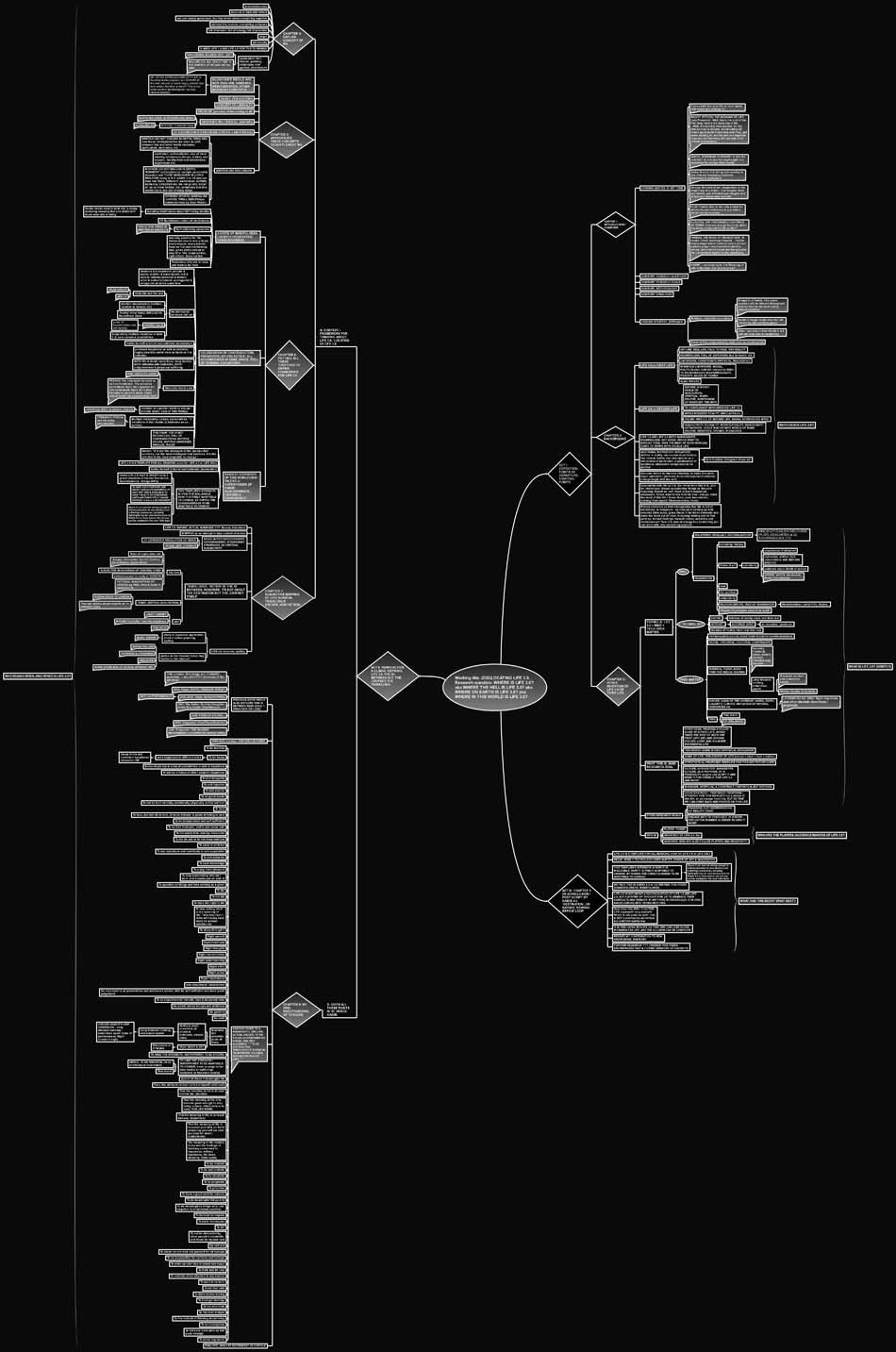
If you can read between the lines and gaze between the greys and grays, why don't you test out this mapping in YOUR life?
UPDATABLE GLOSSARY: SYSTEM OF 3s OR IN-BETWEEN
GLOSSARY/ WIKI ABOUT THE UNIVERSE OF KAIDIE / LIFE 3.0,?AND THE THEATRE OF CHARACTERS (ongoing). SEEKING DEFINITIONS AND MULTIPLE+ ALTERNATIVE DEFINITIONS! CONTRIBUTE NOW!
VARIATIONS OF SYSTEMS OF 3s or IN-BETWEENS:
* Ma
* Wa, Va
* Buddhism’s Middle Way
* Aristotle’s Mind, Self-knowledge, Self-love
* Plato’s Rational, Libidinous, Spirited
* Saussure’s Sign, Signified, Signifier
* Pierce’s Sign, Object, Interpretant
* Liminality
* Lacan’s real-symbolic-imaginary
* Trimurti
* Carl Jung’s triple dieties
* Tridevi
*Lacuna
* Tibetan Buddhism’s Bardo
* Hegel’s Thesis-Antithesis-Synthesis
* Eisenstein’s Synthesis
* Karl Popper’s World 3
* Fuzzy Logic
* Deleuze’s becoming
* Derrida’s Diff’erance
* Heidegger’s in zwischen
* Artaud’s / Deleuze’s subjectile
* 3rd Eye
* 3rd Sex
* 3rd Age
* Holy Trinity
* Tony Blair’s 3rd way
THERE ARE SO MANY OTHER SYSTEMS OF 3 OUT THERE- WHICH OF THEM DO YOU THINK WOULD BE USEFUL FOR US TO ATTEMPT TO LOCATE LIFE 3.0?
MA: THE CONCEPT OF IN-BETWEEN: PART 1
Life 3.0 is located in between Life 1.0 and Life 2.0. A 3rd-Lifer lives in a state of meta-cognition. Rather like Jeremy Benthem’s panopticon, and that ‘special’ edition of the Hollywood blockbuster with ‘Fimmaker’s audio commentary!’, I am my own commentator of my own life with super wide-screen x-ray vision – as I live my life I am simultaneously analysing, unpacking and commenting about it. Which is one of the reasons why we are here. (And, like other post-911 superheroes, this superpower of mine is as much a blessing as it is a burden…) In the attempt to locate Life 3.0 so as to better understand my own position (literally), I re-read the thoughts of various philosophies. Here is one of them, the concept of in-between, ma. Here are some notes:
1) WHAT IS MA? AN INTRODUCTION
Space is substance. Cézanne painted and modelled space. Giacometti sculpted by ‘taking the fat off space’. Mallarmé conceived poems with absences as well as words. Ralph Richardson asserted that acting lay in pauses. ‘I collect silences’, said Heinrich Boll […] Isaac Stern described music as ‘that little bit between each note – silences which give the form’. Frank Kafka warned that ‘[…] Sirens have a still more fatal weapon than their song, namely their silence … someone might possibly have escaped from their singing, but for their silence, certainly never.’ […] The Japanese have a word (ma) for this interval which gives shape to the whole. In the West we have neither word nor term. A serious omission. [1]
In the discussion of space, it is easy to neglect the significance of ‘negative space’, as designer Alan Fletcher reminds us in his encyclopaedic The Art Of Seeing. To be sure, that which is present (‘positive’) is surely more substantial to discuss than that which is not (‘negative’). The very term ‘negative’, in its ordinary day-to-day usage, may sometimes have an unpleasant connotation.
Well, you may not know what you are missing.
Ma (?) is a concept of absence and in-between, which is a departure from a way of looking that privileges the tangible. It is a powerful concept with many faces and layers. Apart from space, ma is applied to the discussion of time as well, revealing that in Japan there was ‘not even a distinction between space and time like in modern Western thought’.[3] The word ‘ma’ essentially refers to ‘an “interval” between two (or more) spatial or temporal things and events. Thus it is not only used in compounds to suggest measurement but carries meanings such as gap, opening, space between, time between, and so forth’.[4]
This spatio-temporal principle of ma underlies all traditional Japanese art forms. However, Like other Japanese aesthetic principles, ma goes beyond just being a ‘way of seeing’, but is a ‘way of life’ as well, for, as Japanese architect Arata Isozaki puts it, it is a ‘fluid term able to encompass many aspects of life in Japan. [5]
[Ma] describes both time and space through a notion of interval. This usage is the basis for understanding all spheres of the environment, life and art to the extent that architecture, fine art, music, drama and gardens in Japan can be called ‘the art of ma’. This undifferentiated understanding of time and space can be considered an important basis for the emergence of differences expressed in Japanese and Western artistic expressions. [6]
That said, while now taken to be a ‘quintessentially’ Japanese notion, like many aspects of Japanese culture and life, ma has its origins in the Chinese philosophies of Taosim, Confucianism and Buddhism. In addition, as typical of cultures that view life as cyclical and temporal, ma as a concept appears to be imprecise according to Western paradigms, adhering to the exasperating ‘oriental’ logic of ‘contradiction’.[7] On another note, although initially a concept applied to the thinking of traditional Japanese art forms, like all robust concepts, ma is versatile enough to be extrapolated to the analysis of other arts (as seen in Fletcher’s quotation above) and indeed, life itself.
2) THE ROOTS OF MA
a) HISTORICAL CONTEXT
To be sure, the concept of a pregnant void has existed way before the notion of manothingness (or emptiness, manifested variously in concepts such as mu, wu, shunyata) is a recurrent theme in Eastern philosophies, a problematic term that is at once mystified and romanticised as it is often misunderstood. Rather than being something that is ‘negative’ or undesirable, it is, on the contrary, a coveted state of mind that diligent Hindus, Buddhists and Taoists alike seek to attain, via various rigorous techniques such as meditation. was formulated in Japan. The notion of
The bedrock of the philosophy of Taoism, Tao Te Ching, written around 6 B.C, contains several texts that deal with the notion of nothingness. Lao Tzu eloquently articulates the role of nothing:
Thirty spokes / Share one hub / Adapt the nothing [wu] therein to the purpose in hand, / and you will have the use of / the cart. Knead clay in order to make a / vessel. Adapt the nothing therein to the / purpose in hand, and you will have the use of / the vessel. Cut out doors and windows in order / to make a room. Adapt the nothing therein to / the purpose in hand, and you will have the use / of the room. Thus what we gain is / Something [yu], yet it is by virtue of Nothing [wu] that this can be put / to use.[8]
For time immemorial, the Japanese have always proved to be Masters of Mashup, being cunningly skilful in how they sampled / appropriated systems and habits of the world to whip into something that would later be identified as ‘idiosyncratically Japanese’ (take for instance Japanese language and the kimono, which are from the Chinese [9]; astonishingly, in 1999, two Japanese companies even claim to have ‘invented’ Indian curry, and attempted to claim patent for it![10]). This was to be the case for the concept of ma as well, as ‘the Tao Te Ching is […] an important place to locate a ma-like element’.[11] Indeed, ma, ‘the Japanese concept of a time-space continuum, complements mu: ma conceives of time and space not as absolute measurable entities’, as the West think of them, but ‘essentially as a void, defined only by the movements and events that take place within it. Space and time are not two distinct entities, but two interrelated dimensions’.[12]
If ma has a contemporary human face (and body), he would manifest in the shape of Isozaki, who was responsible for ‘introducing’ the concept of ma to the western world through his seminal exhibition ‘Ma’: Space-Time in Japan (1978-81) in Paris and New York. This interdisciplinary exhibition ‘presented Japan’s artistic culture through the unifying concept of ‘Ma’ – Space/Time as a basic organisational principle found in Japanese painting, photography, theatre, performance, music, sculpture, architecture and daily life. [13] Ma-mascot Isozaki speculates that the oldest form of the concept of ma was the notion of utsu (void).
Utsu signifies the void inside a certain substance, a cave in a rocky mountain, the hollow inside an old tree, the ‘dug-out’ of a canoe, or the cavity of a pit dwelling – the sacred spirit was thought to lodge in all of these voids. As the view towards the void became more ritualised, even a solid gem was believed to contain a void a sack of cloth, without holes for hands and feet, was thought to be inhabited by the sacred God. The more severed from exteriority, the more sacred the internal void.[14]
This is consistent with our understanding of Shinto as a pantheistic religion. Isozaki explains how the ancient Japanese attempted to visualise and formalise the movement of the kami (spirits) through time and space. This act of waiting for the appearance of the kami is the underlying principle of the Japanese conception of space and time.[15] In fact, the essential subject of many Japanese artistic pursuits (such as Noh and Kabuki theatre) is precisely the representationmoment of inhabitation of a space by kami. [16] Isozaki goes on to assert that in this framework, ‘space was recognised only through the mediation of time’. [17] This is a radical departure from the Western conception of the objective time-space paradigm.
Let us keep this imagery of ma being a space in which the kami appears in mind. We shall come back to it later but for now, let us return to the mortal world attempt to look at more tangible ways to define ma, and see how it permeates in the basic tenets of Japanese life.
b) ETYMOLOGY OF THE WORD
Language is one area in which the Japanese have indeed done a good job in customising it to suit their needs, and any learner of the Japanese language can attest to the difficulty in grasping, much less mastering, the nuances ( – which is slightly embarrassing if one wishes to claim that one’s first language is Chinese). There was much that the teacher at my hothouse Japanese language school in Tokyo could teach (and I could learn) – but there was so much more that is fascinating as it is frustrating in the Japanese language.
Take the beguilingly simple single character of ma, which is the centre of our investigation. The Chinese character ma (?) is made up of two elements: the gate or door (mon, ?) and the inner character meaning sun (hi, ?) or moon (tsuki, ?). The character itself has a repertoire of meanings both tangible and abstract. ‘A room is called ma, for example, as it refers to the space between the walls; a rest in music is also ma as the pause between the notes or sounds’. [18]
For Isozaki,
Ma is the natural distance between two or more things existing in a continuity or the space delineated by posts and screens. To sense something invisible is an essence of Japanese art. It also pervades various aspects of life & culture in Japan. In painting, the focus has often been on the margin rather than on shape, in music on silence rather than the notes and in dance on stillness rather than movement. All of these can be expressed by a single term: ma ?.’[19]
One person inspired by the Ma exhibition in New York in 1979 who put his excitement into good use was Richard B. Pilgrim, a scholar on Japanese religion and art. Pilgrim waxes lyrical of this ideogram:
The visual image or character, therefore, suggests a light shining through a gate or door. If we were to take the gate itself as representing the things or phenomena and events of the world, the opening in the gate becomes a ma or interval between the things. Yet ma is not a mere emptiness or opening; through and in it shines a light, and the function of this ma becomes precisely to let that light shine through. [20]
Ecstatic with this imagery, Pilgrim goes on to elaborate:
A literary example of this image can be found in the twelfth-century novel, The Tale of Genji by Lady Murasaki: “It was the fifteenth night of the eighth month. The light of an enclouded full-moon shone between the ill-fitting planks of the roof and flooded the room. What a queer place to be lying in!, thought Genji, as he gazed around the garret, so different from any room he had ever known before.” [21]
While Pilgrim’s lyrical flourish may appear a little excessive, it is fascinating indeed that a single ideogram alone can encapsulate such a striking imagery. It helps us to understand the multifaceted ways in which ma is used in the Japanese language, and in essence, deeply ingrained in Japanese consciousness. Indeed, ‘the concept of ma became customised and widespread in many aspects of Japanese life’.[22] kami making a visitation in ma. Again, let us keep this imagery of light shining through a door in our mind; we shall return to this imagery later, along with that of the kami making a visitation in ma.
The character of ma can be combined with other words to make compound words related to time and space such as:
?? (ji kan): time
?? (kuu kan): space (where kuu = ‘empty’; ma is read kan here)
???? (ma mo naku): soon
???? (ma ni au): on time
??? (kono aida)?the other day (where ma is read aida here)
Then, ma then can also mean ‘among’ :
??(naka ma): companion
?? (nin gen): human being (ma is read gen here)
Pilgrim takes the compound ningen to refer to ‘persons (nin, hito) stand within, among, or in relationship to others. As such, the word ma clearly begins to take on a relational meaning– a dynamic sense of standing in, with, among, or between’. [23]
Ma also ‘carries an experiential connotation since to be among persons is to interact in some dynamic way’. [24] The following phrases illustrate this nuance:
???? (ma wo toru): stop, pause
??? (ma chigai): mistake
???? (ma ga warui): unlucky, embarrassed
??? (ma nuke): stupidity
Since ma signifies the ‘distance between two points’, Isozaki adds that ‘maintaining distance was deemed imperative in human relations as well; those who ignore this were called manuke (missing or lacking distance), meaning “idiot”. [25] When I learnt this phrase in language school, I thought that this is such an elegant way to call someone an idiot that I would not hesitate to be called one (in the Japanese language). To be sure, there are other less poetic antonyms in the Japanese language, but compared to terms available in the English language,[26] I will take manuke anytime (and anywhere).
[1] Alan Fletcher, The Art of Looking Sideways (Phaidon Press, 2001), (p. 370).
[2]Concordia College, “Alberto Giacometti, 1901-1966.” Art and Physics: Artists. <http://www.cord.edu/faculty/andersod/giacometti.html> [accessed 20 November 2009]
[3] Arata Isozaki and Ken Tadashi Oshima, Arata Isozaki (Phaidon Press, 2009), (p. 161).
[4] Richard B. Pilgrim, “Intervals (“Ma”) in Space and Time: Foundations for a Religio-Aesthetic Paradigm in Japan,” History of Religions, 25 (1986), 255-277 (p. 255).
[5] Isozaki and Oshima, p. 158
[6] Arata Isozaki and Ken Tadashi Oshima, Arata Isozaki (Phaidon Press, 2009), (p. 157). Italics mine.
[7] Daniel Charles, “Bringing The Ryoan-Ji To The Screen.” Taka Iimura homepage. Translated by Eleanor Mitch from the French, copy edited by Nadine Covert <http://www.takaiimura.com/review/DC.html> [accessed 20 November 2009]
[8] Richard B. Pilgrim, “Intervals (“Ma”) in Space and Time: Foundations for a Religio-Aesthetic Paradigm in Japan,” History of Religions, 25 (1986), 255-277 (p. 264).
[9] RECALL MORE, AND STRONGER, SHARPER EXAMPLES- THERE ARE MANY!!!
[10] Geoffrey Lean and Fran Abrams, “Japan in a hurry to claim rights to curry – News – The Independent.” The Independent, November 28, 1999. <ariyavansa.org> [ accessed 20 November 2009]
[11] Pilgrim, p. 264
[12] Kathe Geist, “West Looks East: The Influence of Yasujiro Ozu on Wim Wenders and Peter Handke,” Art Journal, 43 (1983), 234-239 (p. 234).
[13] Isozaki and Oshima, p. 172
[14] Ibid, p. 158
[15] Ibid, p. 157
[16] Ibid, p. 157
[17] Ibid, p. 157
[18] Ibid, p. 158
[19] Isozaki and Oshima, p. 158
[20] Pilgrim, p. 257
[21] Ibid, p. 257
[22] Isozaki and Oshima, p. 161
[23] Pilgrim, p. 256
[24] Ibid, p. 256
[25] Isozaki and Oshima, p. 161
[26] Such as ‘fool, ass, halfwit, dunce, dolt, ignoramus, cretin, moron, imbecile, simpleton; informal dope, ninny, nincompoop, chump, dimwit, dumbo, dummy, dum-dum, loon, dork, sap, jackass, blockhead, jughead, bonehead, knucklehead, fathead, numbskull, numbnuts, dumb-ass, doofus, clod, dunderhead, ditz, lummox, dipstick, thickhead, meathead, meatball, woodenhead, airhead, pinhead, lamebrain, peabrain, birdbrain, jerk, nerd, donkey, nitwit, twit, boob, twerp, schmuck, bozo, turkey, chowderhead and dingbat’. From Apple Dictionary, version 2.0.2 (51.4).
